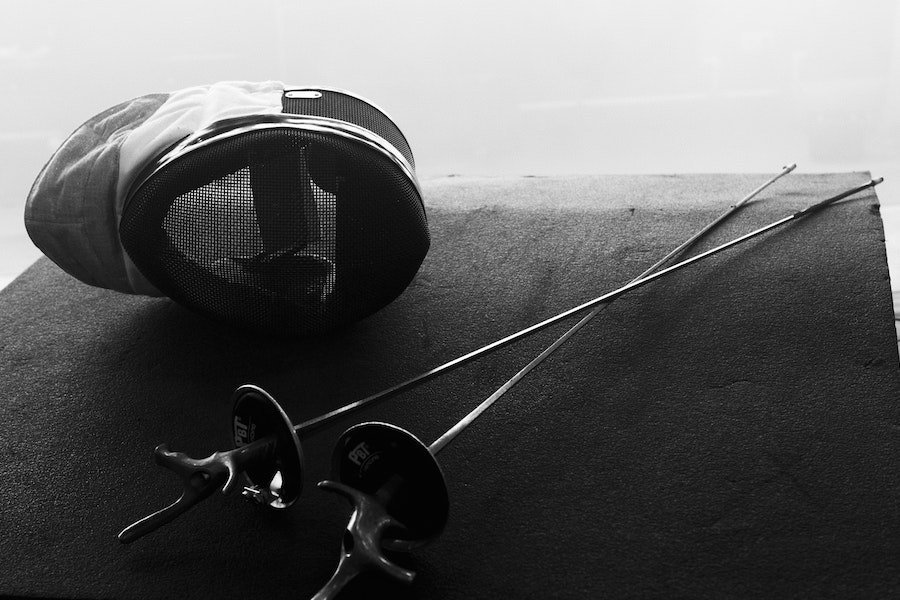Are Fencing Swords Sharp?

Fencing, a sport that combines athleticism, strategy, and artistry, has captivated audiences and participants for centuries. Central to this sport are the swords used by fencers, which come in various types and designs. A common question that arises among those new to fencing is, "Are fencing swords sharp?" Understanding the nature of fencing swords and their construction is essential for anyone interested in this thrilling sport. In this article, we will explore the different types of fencing swords, their edges, and the implications of sharpness for safety and performance.
Quick Info Table
| Sword Type | Sharpness Level | Purpose | Material |
|---|---|---|---|
| Foil | Not sharp | Scoring points in competitions | Flexible steel |
| Épée | Not sharp | Full-body target, thrusting | Stiffer steel |
| Sabre | Not sharp | Cutting and thrusting | Light steel |
| Historical | Sharp (varies) | Authentic representation | Carbon steel or alloy |
The Nature of Fencing Swords
Types of Fencing Swords
Fencing swords can be broadly categorized into three main types: foil, épée, and sabre. Each sword has its unique design and purpose, influencing their construction and, consequently, their sharpness.
-
Foil: The foil is a lightweight sword primarily used for point-based competition. It features a flexible blade designed for thrusting rather than cutting. The blade's design minimizes the risk of injury, as it is not sharp. Instead, it relies on a blunted tip for safety during practice and competition.
-
Épée: The épée is heavier and stiffer than the foil, designed for full-body targeting. Like the foil, the épée blade is not sharp, focusing on thrusting techniques. The épée also features a larger guard to protect the fencer's hand, further emphasizing safety.
-
Sabre: The sabre combines cutting and thrusting techniques, making it a versatile weapon in fencing. Similar to the other two swords, the sabre is not sharp, with a blunted edge designed to prevent injury during sparring and competition.
Construction and Material
Fencing swords are typically made from various alloys of steel, which provide the necessary strength and flexibility. The blades are designed to withstand the impact of strikes while remaining lightweight for agility and speed. Though the materials used in fencing swords can vary, they all share a common characteristic: safety is paramount, which is why they are not sharp.
The Importance of Sharpness in Fencing
Safety Considerations
One of the primary reasons fencing swords are not sharp is safety. Fencing is a contact sport, and while protective gear is essential, the risk of injury can never be entirely eliminated. By using blunted blades, fencing organizations prioritize the fencer's safety, enabling athletes to spar and compete with reduced risk.
Additionally, sharp blades would increase the likelihood of serious injuries during practice sessions and competitions. Fencers often engage in fast-paced, dynamic movements, making it critical to minimize the potential for accidents. The design of fencing swords reflects a commitment to safety without sacrificing the sport's competitive nature.
Performance and Technique
While sharpness is not a factor in the construction of fencing swords, performance relies heavily on other aspects, such as balance, weight distribution, and flexibility. A well-balanced sword allows fencers to perform complex maneuvers with precision and control. The absence of sharpness does not detract from a fencer's ability to deliver effective thrusts or cuts, as technique and speed are far more critical in scoring points.
Fencers train extensively to develop their skills, ensuring they can use the sword effectively regardless of its sharpness. The focus on technique and strategy over sharpness allows fencers to engage in a highly skilled competition that emphasizes mental acuity and physical prowess.
The Role of Historical Swords
In contrast to modern fencing swords, historical swords used in various martial arts may indeed be sharp. These swords, often referred to as "blades," are designed for combat rather than sport. In historical fencing, practitioners may use sharp swords to recreate authentic fighting techniques. However, this practice is distinct from modern fencing, where safety measures are prioritized.
Historical swords can serve as valuable tools for training and education, granting insights into the evolution of fencing and swordsmanship throughout history. While they may be sharp, their use requires a deep understanding of safety protocols and techniques to prevent accidents.
Counterarguments and Alternative Perspectives
While the consensus is that fencing swords are not sharp for safety reasons, some enthusiasts argue that a degree of sharpness could enhance the realism of training. They contend that practicing with a sharper blade might improve a fencer's focus and precision. However, this perspective often overlooks the importance of safety in modern fencing.
Moreover, the sport has evolved significantly since its inception. Modern fencing emphasizes sport over combat, and safety protocols have shaped the design of fencing swords. The potential for injury remains a significant concern, and sharp swords could undermine the sport's integrity.
Conclusion
In conclusion, fencing swords are designed specifically for safety and performance, which is why they are not sharp. The three main types of fencing swords—foil, épée, and sabre—are crafted from flexible and durable materials, prioritizing the fencer's well-being while allowing for competitive play. The absence of sharpness does not diminish the skill required to excel in fencing; rather, it allows athletes to focus on technique, strategy, and agility.
As you embark on your fencing journey or explore the sport, remember the significance of safety and the artistry behind each sword. By appreciating the design and purpose of fencing swords, you can gain a deeper understanding of this age-old sport and its remarkable evolution. Whether you're a participant or a spectator, the world of fencing invites you to engage in a rich tapestry of history, athleticism, and camaraderie.



Comments ()